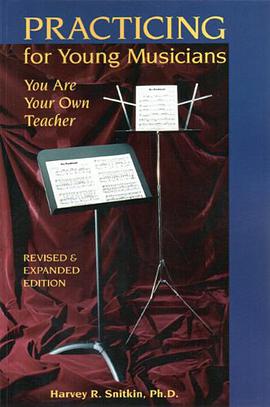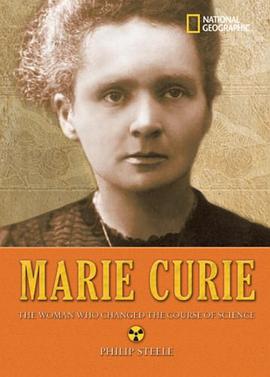

具体描述
"Though I do not believe
that a plant will spring up
where no seed has been,
I have great faith in a seed.
Convince me that you have a see there,
and I am prepared to expect wonders.
--Henry David Thoreau
Henry David Thoreau's life was full of wonder. He led a life that was enmeshed in nature, as he saw and experienced life to the fullest. His belief in the power of nature has been well-documented. He's most recognized for Walden, which was a complete immersion in nature.
"Faith in a Seed" was Thoreau's final manuscript, presented here for the first time by Bradley P. Dean. The book contains: "The Dispersion of Seeds," "Wild Seeds," "Wild Fruits," "Weeds and Grasses," "Forest Trees," "A Thoreau Chronology," "Editor's Notes," "Acknowledgments," and an index. Though the manuscript has been considered a draft, the final publication of this work is an important contribution to Thoreau scholarship.
Thoreau: An Observer
Thoreau's course was first determined by the publication of his first work in 1849. It was called A Week on the Concord and Merrimack River and it told of the 2-week boat trip he took with his brother, John, in 1939. Later, with Walden, he made an important contribution to American literature.
As Robert D. Richardson says, "Walden is a great—-perhaps the greatest—-celebration of the sweet freedom of life in nature that is single, unattached, and uncommitted. 'The Dispersion of Seeds, 'in contrast, celebrates fertility, fecundity, and interconnectedness." Of course, Thoreau was more than just an observer. He became a student of nature, as he attempted to learn the language of the seeds, plants and animals. In the "Forward," Gary Paul Nabban explains that Thoreau was "occasionally worried" by this trend to immerse himself in nature, afraid that it might affect his art.
Even if his later work is not as widely-recognized, it is no less important if we are to understand the full coarse of his life and works. As Nabhan writes, "It was on the wings of seeds that Thoreau sailed home, where he found peace before he died... Thoreau gradually became convinced that what he could learn closest to home was what was ultimately of the greatest value."
作者简介
亨利·戴维·梭罗":
美国先验主义作家,19世纪美国文化巨匠中的一位“异人”。他和爱默生、富勒都是“简朴生活”的一代宗师,他们亲近自然,回归本新,这种思想深深地影响了美国文化,也影响了全世界。其代表作《瓦尔登湖》记录了作者隐居瓦尔登湖畔,与大自然水乳交融,在田园生活中感知自然重塑自我的奇异历程,是当代美国拥有读者最多的散文经典。
徐迟(1914-1996):
中国著名诗人,作家,曾任全国文联委员,中国作协理事,湖北省文联副主席等职,生前创作并翻译了大量著作,主要有《哥德巴赫猜想》(报告文学选)、《徐迟散文选集》、散文集《法国,一个春天的旅行》,论文集《红楼梦艺术论》、《丈艺和现代化》,译著《瓦尔登湖》等。
目录信息
读后感
请看这里http://www.unicornbbs.cn/dispbbs.asp?boardID=17&ID=34155&star=2&page= 或这里http://www.douban.com/group/topic/7352089/
评分谈论一位大家以及他的书,这无疑是一件并不那么容易的事。因为他的经历、思想乃至身后的评价都已经被许多人说了许多遍,比如说到梭罗及其思想轨迹的形成,就一定要说到爱默生及其超验主义、华兹华斯及其湖畔派诗歌,梭罗受到他们的影响至深。这不仅在他的作品中得到了体现,更...
评分小冒坚持原创的day387 有多少人就因为读过一本书便为生命翻开了新的一页~~ 书籍在等着我们,有时它会在为我们解密奇迹的同时展示另一番奇迹;我们会发现某些在眼下难以言说的现象却早已在别处获得了表达;那些折腾我们,让我们迷惘困惑的问题无一例外地叩问过所有智者,这些问...
评分梭罗这本书倒是在十月就买了,我很少看名著,《瓦尔登湖》却看过,印象不深刻。也许是那个时候的自己未能明白一些感情吧。 看书真的是需要时间来沉淀的,很多我曾经看不懂的书,不明白好在何处的书,在若干年后我回过头来看时,会觉得写得精彩至极;很多我曾经觉得很无聊的书...
评分读这本书的时候,总是想象着在美国一个小镇的林地和牧场间踽踽行走的观察者。他饶有兴趣地捡起跌落在地的果实、观察松鼠和鸟儿的行动,测量地上刚刚萌发的树苗,甚至拔一下看看它的根系到底延伸到多长。他不厌其烦地反复解释着不同树种的树林究竟是如何彼此取代的:橡树苗和栗...
用户评价
简洁自然的生命之美,生命之泉的流淌
评分一个人只接受他准备接受的东西,无论是在身体上,智力上还是道德上……我们只聆听和理解我们已经半懂的东西。每个人的生命轨迹存在于他所听、所读、所看、所游之中。
评分一个人只接受他准备接受的东西,无论是在身体上,智力上还是道德上……我们只聆听和理解我们已经半懂的东西。每个人的生命轨迹存在于他所听、所读、所看、所游之中。
评分一个人只接受他准备接受的东西,无论是在身体上,智力上还是道德上……我们只聆听和理解我们已经半懂的东西。每个人的生命轨迹存在于他所听、所读、所看、所游之中。
评分一个人只接受他准备接受的东西,无论是在身体上,智力上还是道德上……我们只聆听和理解我们已经半懂的东西。每个人的生命轨迹存在于他所听、所读、所看、所游之中。
相关图书
本站所有内容均为互联网搜索引擎提供的公开搜索信息,本站不存储任何数据与内容,任何内容与数据均与本站无关,如有需要请联系相关搜索引擎包括但不限于百度,google,bing,sogou 等
© 2025 book.quotespace.org All Rights Reserved. 小美书屋 版权所有




















